Beet greens are a nutritious and versatile part of the beet plant that are often overlooked. Packed with vitamins, minerals, and antioxidants, these leafy greens can be used in a variety of dishes, from salads to sautés. However, to make the most of their fresh flavor and nutritional benefits, it’s important to store beet greens properly. This guide will explain the best methods for how to store beet greens.
Importance of Proper Storage
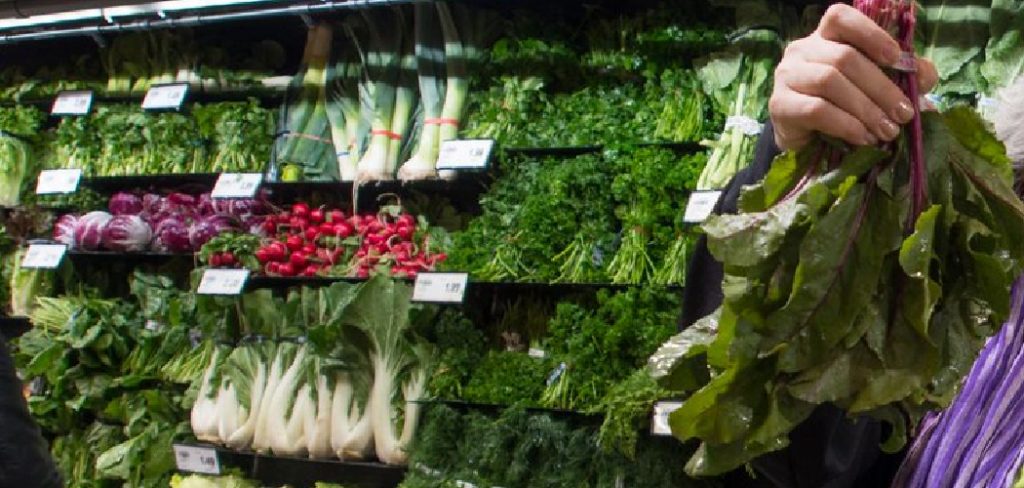
Storing beet greens properly is crucial to preserving their freshness, flavor, and nutritional value. Without proper storage, these delicate greens can wilt, lose their vibrant color, and become unusable in just a few days.
Proper storage methods help to maintain their texture and reduce spoilage, ensuring you get the most out of this nutrient-dense vegetable.
Additionally, extending their storage life minimizes food waste, making it both an economical and environmentally friendly practice. Whether you’re planning to use beet greens in a recipe or keep them as a healthy option for later, proper storage is the key to enjoying their full potential.
Common Uses of Beet Greens in Cooking
Beet greens are a flavorful addition to a wide range of dishes, making them a favorite among home cooks and chefs alike. They can be used fresh in salads, bringing a slightly earthy taste and a boost of nutrients to your plate. Sautéed beet greens are a popular choice and can be seasoned with garlic, olive oil, and a pinch of salt for a simple yet delicious side dish.
They also pair well with grains like quinoa or farro, adding texture and flavor to bowls or pilafs. For a unique twist, beet greens can be blended into smoothies or soups, providing a nutritious and vibrant green component. Their versatility means you can incorporate them into omelets, stir-fries, or even as a topping for pizzas, making them an excellent way to reduce food waste while enhancing your meals.
10 Easy Steps on How to Store Beet Greens
1. Refrigerate Immediately After Harvesting or Purchasing
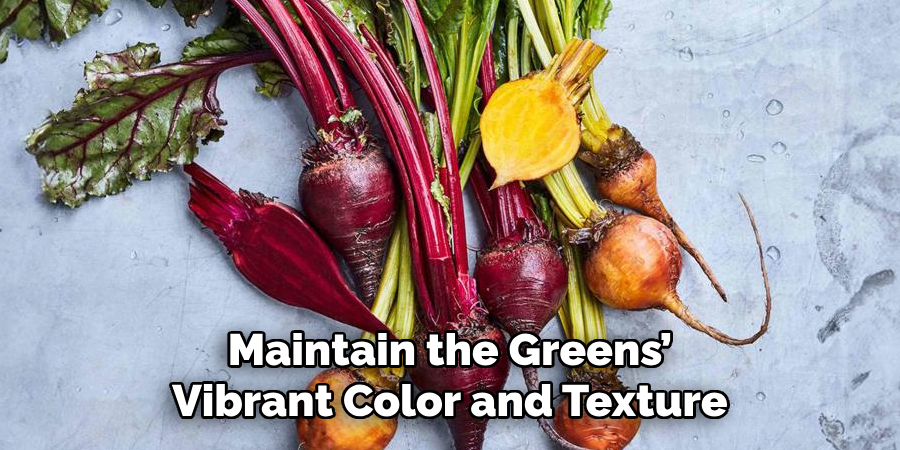
To maximize freshness, refrigerate beet greens as soon as possible. The ideal temperature for storing greens is between 32°F and 40°F. Place them in the crisper drawer of your refrigerator, which maintains the right humidity levels to keep the leaves crisp and fresh. This method prevents wilting and helps maintain the greens’ vibrant color and texture.
2. Separate the Greens from the Beets
If you purchase beets with their greens still attached, separate the leaves from the roots immediately. Leaving them attached can cause the greens to draw moisture from the beetroot, leading to faster wilting. Use a sharp knife or scissors to trim the stems about an inch above the root, and store them separately to maintain their quality.
3. Wrap in Damp Paper Towels
To prevent dehydration and wilting, wrap beet greens in slightly damp paper towels before placing them in the refrigerator. The moisture from the towels helps maintain humidity without making the greens overly wet, which could encourage mold growth. Place the wrapped greens in a breathable bag or container to allow air circulation while retaining moisture.
4. Store in a Perforated Plastic Bag
A perforated plastic bag helps maintain humidity levels while allowing airflow, preventing condensation buildup that can lead to spoilage. Place the wrapped greens inside the bag and store them in the crisper drawer. Avoid sealing the bag completely, as this can trap excess moisture and promote decay.
5. Use an Airtight Container for Short-Term Freshness
For those planning to use beet greens within a few days, an airtight container can be a viable storage option. Line the container with a dry paper towel to absorb excess moisture and place the greens inside. Keep the container in the refrigerator and check periodically for signs of wilting or moisture buildup, replacing the paper towel as needed.
6. Freeze for Long-Term Storage
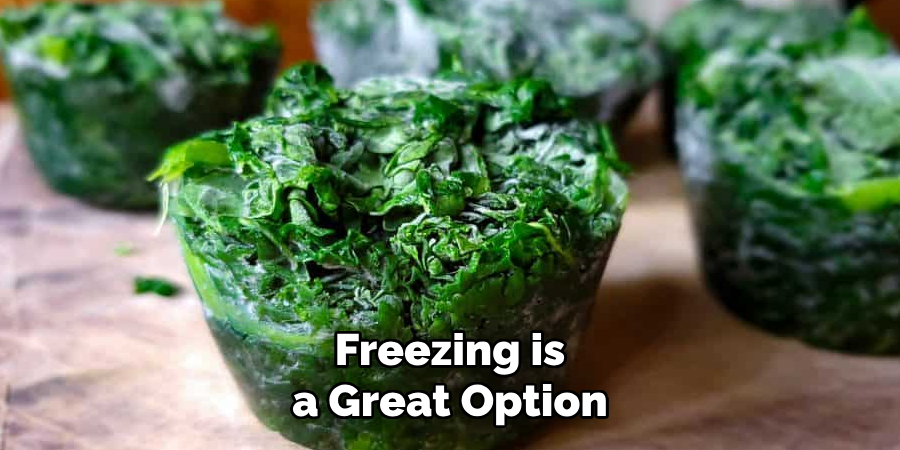
If you have an abundance of beet greens and want to store them for several months, freezing is a great option. First, blanch the greens by boiling them for 30 seconds, then immediately transferring them to an ice bath to halt the cooking process. Drain and pat them dry before placing them in freezer-safe bags or containers. Label the bags with the date of freezing for easy tracking.
7. Vacuum Seal for Maximum Freshness
Vacuum sealing removes air from storage bags, significantly extending the shelf life of beet greens. After blanching and drying the greens, place them in vacuum-sealed bags and store them in the freezer. This method prevents freezer burn and preserves the greens’ nutrients and flavor for up to a year.
8. Store in Water for Crispness
For short-term storage, placing beet greens in a jar of water can help maintain their crispness. Trim the stems and place the greens in a glass jar with about an inch of water, similar to how you store fresh herbs. Cover the leaves loosely with a plastic bag and refrigerate. Change the water every couple of days to maintain freshness.
9. Dehydrate for Long-Term Use
Another long-term storage method is dehydrating beet greens. Wash and pat dry the leaves before spreading them evenly on a dehydrator tray. Set the dehydrator to 125°F and dry the greens until they are brittle. Store the dried greens in an airtight container in a cool, dark place. They can be used later in soups, smoothies, or as a seasoning.
10. Monitor for Signs of Spoilage
Regardless of the storage method used, regularly check beet greens for signs of spoilage, such as yellowing, sliminess, or an off-putting odor. Remove any deteriorated leaves immediately to prevent the spread of spoilage to the remaining batch. Proper monitoring ensures that the greens stay fresh and safe to consume.
Maintenance and Upkeep
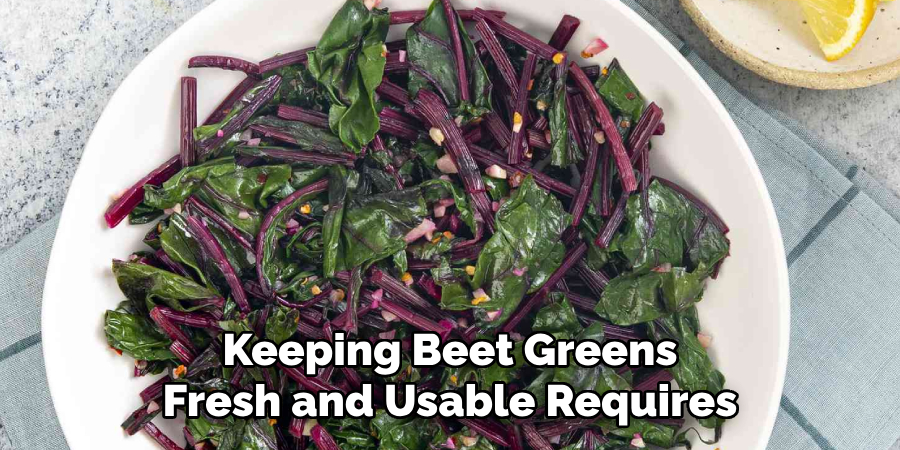
Keeping beet greens fresh and usable requires consistent attention and care. Start by routinely checking the storage conditions, whether they are in the refrigerator, freezer, or another method. Ensure that the humidity levels and temperature remain optimal, as fluctuations can impact the greens’ quality. If stored in the refrigerator, replace damp paper towels or the water in jars every few days to avoid spoilage and maintain hydration.
For those storing in the freezer, periodically verify that the greens remain free of freezer burn and that containers are sealed tightly to prevent air exposure. Check on dehydrated greens as well, ensuring they remain crisp and properly sealed in their containers without signs of moisture or pests. Keeping track of stored batches with labels, including dates, will help you use older greens first, minimizing waste.
By incorporating mindful maintenance habits, you can extend the usability and freshness of beet greens and make the most of their nutritional benefits wherever and whenever they are needed. Regular upkeep ensures they remain a valuable addition to your kitchen.
Troubleshooting Common Issues
Even with proper storage methods, you may occasionally encounter issues with your beet greens. Here are some common problems and how to address them:
1. Greens Wilting Quickly
If your beet greens are wilting despite being stored correctly, check the humidity levels in your refrigerator’s crisper drawer. Insufficient humidity can lead to dehydration. Wrapping the greens in damp paper towels or placing them in a perforated plastic bag can help retain moisture without making them too wet. If possible, adjust the humidity settings in your refrigerator for optimal storage.
2. Excess Moisture Leading to Slime
Excess moisture can create an ideal environment for mold and sliminess to develop on the greens. Ensure the paper towels or lining in the container or airtight bag are not too damp. Replace damp paper towels regularly to avoid water buildup, and make sure storage bags or containers are not sealed too tightly unless vacuum-sealed.
3. Yellowing Leaves
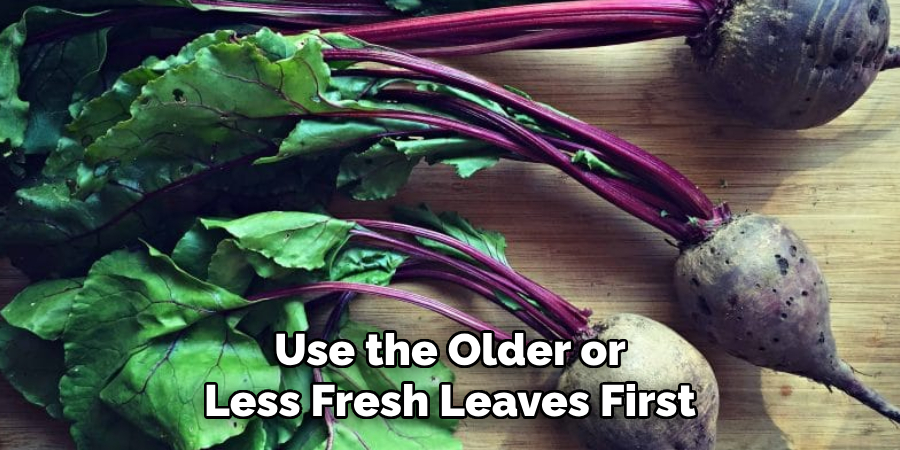
Yellowing leaves may occur if the greens are stored for too long or if they were not fresh at the time of purchase. Inspect your beet greens before storing and use the older or less fresh leaves first. Proper labeling of storage dates can help you prioritize usage and reduce waste.
4. Freezer Burn on Frozen Greens
Freezer burn can happen if the greens are not properly sealed or if the freezer temperature fluctuates. To avoid this, ensure greens are completely dried after blanching and securely vacuum-sealed or stored in airtight, freezer-safe bags. Keep your freezer temperature consistent at 0°F (-18°C) to maintain freshness.
5. Brittleness in Dehydrated Greens
If dehydrated greens lose their crispness or absorb moisture over time, it could be due to insufficient sealing or exposure to humidity. Store dehydrated greens in airtight containers with desiccant packets to absorb moisture, and keep them in a cool, dark place to extend their shelf life.
6. Off Odors or Flavors
Beet greens with an unusual smell or taste are typically a sign of spoilage. This can result from improper storage, delayed use, or contamination from other foods. Regularly inspect the greens for signs of decay, and always store them away from strong-smelling items in the refrigerator to avoid flavor transfer.
Conclusion
Beet greens are a nutritious and flavorful addition to meals, but their delicate nature requires proper storage to prevent wilting and spoilage. Whether refrigerating, freezing, vacuum-sealing, or dehydrating, choosing the right method can extend their shelf life and preserve their valuable nutrients. Thanks for reading, and we hope this has given you some inspiration on how to store beet greens!
Professional Focus
Angela Ervin, a former interior designer turned blogger, specializes in kitchen design and renovations. Through her website, she blends her passion for cooking with design expertise, sharing practical and creative ideas. Known for balancing functionality and beauty, Angela’s insightful content has made her a trusted voice in home design and lifestyle.
About the Author
Angela Ervin, an experienced interior designer and blogger, combines her passion for kitchen renovations with storytelling. Living in Petersburg with her family, she enjoys cooking and testing her projects firsthand. Known for her humor and relatable style, Angela shares creative, functional design insights through her content, making her a trusted voice in home design.
Education History
University: Virginia Commonwealth University
Degree: Bachelor of Fine Arts (BFA) in Interior Design
- Angela’s education at VCU focused on mastering core interior design principles, including spatial planning, color theory, materials selection, and sustainable design practices.
- She gained hands-on experience through studio projects and collaborative design exercises, which honed her ability to create functional and aesthetically pleasing environments.
- Her coursework also emphasized problem-solving and practical applications of design, preparing her for real-world projects like her self-directed kitchen renovations.
- The program’s strong foundation in both technical skills and creative expression shaped Angela’s ability to seamlessly integrate form and function in her work.


